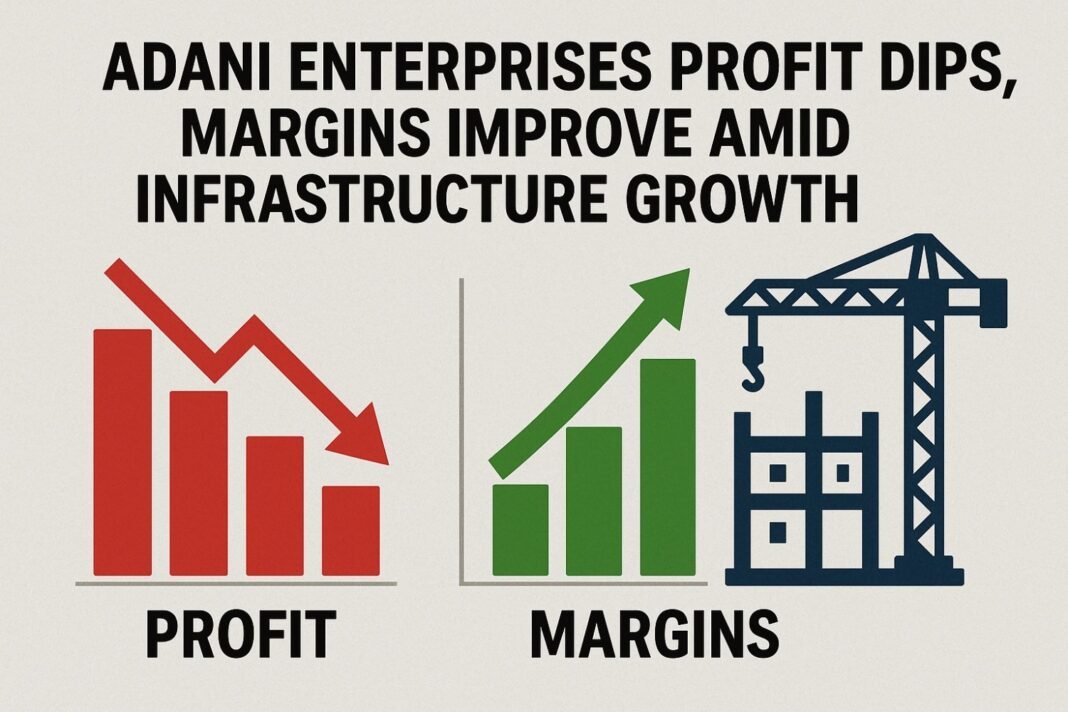Adani Enterprises Q1 FY26 Earnings Overview
Adani Enterprises Ltd (AEL), the diversified flagship of the Gautam Adani-led conglomerate, reported its financial results for the first quarter of fiscal year 2026, revealing a significant decline in net profit even as margins saw an improvement. The consolidated net profit for the April–June 2025 quarter stood at ₹734 crore, a steep 50% drop compared to ₹1,458 crore recorded in the same quarter last year. Despite the earnings slump, the company’s margin profile strengthened, primarily driven by robust performance in its infrastructure and incubating business verticals.
Revenue Slips, Margins Hold Firm
Total income for the quarter came in at ₹22,437 crore, down 14% year-on-year from ₹26,067 crore in Q1 FY25. The contraction was largely attributed to weakness in the coal trading division, which has historically formed a significant part of the company’s revenue base.
Earnings before interest, taxes, depreciation, and amortization (EBITDA) for the quarter fell 12% to ₹3,786 crore, compared to ₹4,300 crore in the previous year. However, EBITDA margin improved, buoyed by increased contributions from high-growth businesses in the infrastructure and energy transition sectors. Notably, incubating verticals such as airports, green hydrogen, and roads accounted for 74% of total EBITDA, amounting to around ₹2,800 crore, up 5% year-on-year.
Segment Analysis: Coal Slows, Infra Grows
Adani Enterprises’ traditional coal trading business, which contributed about 36% to total revenue, experienced severe headwinds. A 27% year-on-year drop in coal revenues was driven by weakened demand for thermal power amid milder summer conditions, early monsoon arrival, and broader economic softness. As a result, profit from the coal segment plunged 45%, impacting the group’s consolidated performance.
In contrast, infrastructure and incubation businesses offered a strong counterbalance. The airports vertical emerged as a bright spot, with a 61% year-on-year jump in EBITDA, supported by increased passenger traffic—rising to 23.4 million from 22.8 million—and stronger revenue from non-aeronautical segments like retail and parking. However, Adani New Industries Ltd (ANIL), which is spearheading the group’s green hydrogen initiatives, reported a 26% decline in EBITDA, largely due to lower volumes and pricing pressure.
Strategic Initiatives and Fundraising Moves
During the quarter, the company undertook notable capital optimization steps. AEL raised ₹3,700 crore by partially exiting its stake in Adani Wilmar through a block deal and has committed to selling the remaining 20% stake. Additionally, the company successfully issued ₹1,000 crore worth of non-convertible debentures (NCDs), which were fully subscribed within hours—underscoring investor confidence in the firm’s financial strategy.
Chairman Gautam Adani reaffirmed the group’s transformation strategy, highlighting the imminent launch of key infrastructure assets like the Navi Mumbai International Airport, a copper refining plant, and the Ganga Expressway. These ventures are part of Adani Enterprises’ long-term plan to shift away from volatile commodities trading towards sustainable and infrastructure-led revenue streams.
Market Reaction and Forward Outlook
Following the earnings report, AEL’s stock faced selling pressure, dropping between 3.8% and 4%, with shares trading around ₹2,434–₹2,436. The sharp decline in net profit weighed on investor sentiment, although the expanding margin and growing contribution from high-growth sectors offered some optimism for future quarters.
Looking ahead, the company is expected to ramp up its capital expenditure in Q2 FY26, particularly in next-generation infrastructure and green energy projects. Analysts suggest that as more cornerstone projects reach operational status, the company may achieve greater earnings stability, with potential for margin expansion over the medium term.
Adani Enterprises’ Q1 FY26 performance underscores the duality of its evolving business model. While legacy sectors such as coal trading faced challenges, the company’s forward-looking bets on infrastructure and clean energy began to yield results. Though earnings declined significantly, the shift towards stable, high-margin businesses helped cushion the impact. As strategic projects come to fruition and capital is increasingly allocated to future-ready ventures, AEL appears positioned for more consistent and resilient performance in the quarters ahead.








